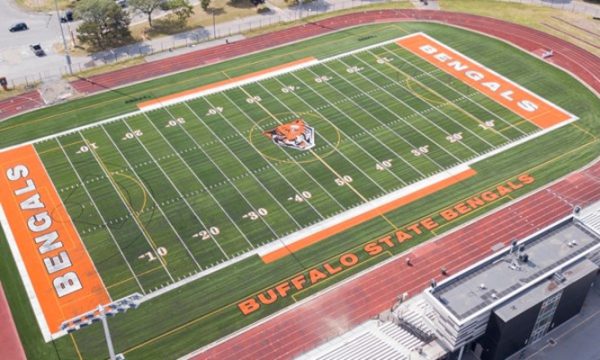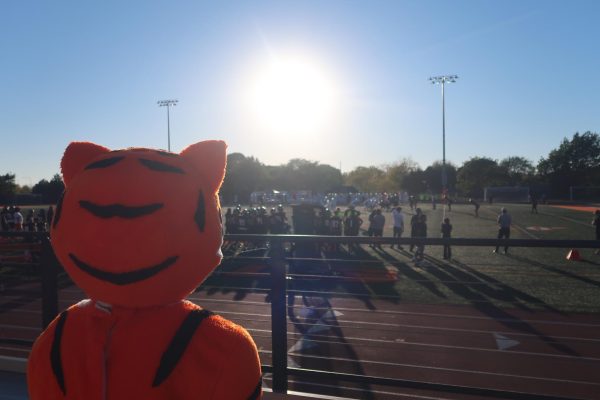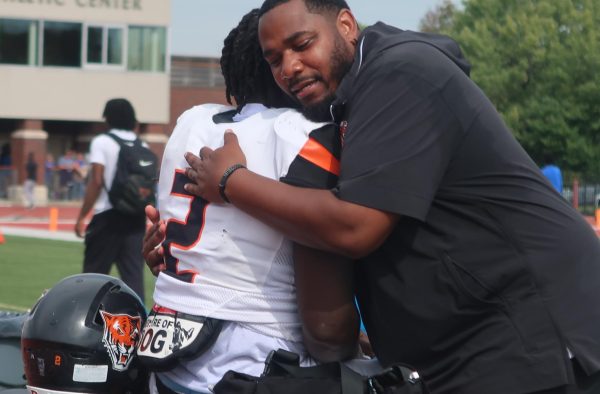Two from Buffalo State inducted into Greater Buffalo Sports Hall of Fame
Fred Hartrick
The journey started for Fred Hartrick at Oberlin College in Ohio. He wanted to major in physical education and athletics. More than 50 years later, the Greater Buffalo Sports Hall of Fame is recognizing him for his athletic achievements.
Hartrick was inducted to the Hall of Fame on Oct. 30, as a member of the 2013 class.
“It’s probably something that I never expected I’d ever had a chance to experience,” Hartrick said. “It really is the highest honor you can get in athletics and sports in the area.”
After Hartrick graduated from Oberlin, he spent time at Penn State and Purdue to begin graduate and masters work. After six years of school and influence from former coaches, Hartrick had enough, and went looking for a job.
Hartrick came to Buffalo State in 1959 as the head coach of both the men’s soccer and baseball programs. He spent nine years as the coach of both programs before turning his full attention to the soccer program. He spent 22 years head coach of the soccer team, recording 150 wins.
He led the team to its first NCAA Tournament appearance in 1967. He also led the Bengals to an undefeated mark of 13-0-2 and a No. 7 national ranking.
Hartrick’s contributions to the Buffalo State program went far beyond coaching. After his time leading players on the field, he focused his attention to the administrative side of athletics. He served as the college’s athletic director until 1996 and was a driving force behind the construction of the basketball and hockey facilities.
Hartrick worked with designers on construction of the building that now serves as the basketball and hockey facilities. Hartrick is often referred to as the “father of the modern era of Buffalo State athletics.”
Hartrick’s efforts in sports did not stop when he left Buffalo State. He served as an executive director for the Buffalo District Golf Association from 2002-09.
He helped grow the association by adding women’s and junior tournaments. He increased the prestige of the association, which now hosts more than 15 tournaments each year, while developing relationships with many golf clubs in the area
“I went through it all,” Hartrick said. “The interest level was there. I really wanted to try new things but I never looked back and said ‘oh, boy, I should’ve done that, or I should’ve done this.’ I did everything I wanted to do and was very happy doing it.”
Pam Amabile
Pam Amabile was on a spring trip with the Buffalo State softball team when her phone rang.
Not wanting to break the law, one of her players, Kara Stein, answered it. The woman on the other end was the president of the Greater Buffalo Sports Hall of Fame, Therese Forton-Barnes, and she said she needed to speak with Amabile.
When Amabile picked up the phone, Forton-Barnes informed the Buffalo State softball pitching coach that she would be inducted into the Hall of Fame as a member of the 2013 class on Oct. 30.
“It is without a doubt the pinnacle of a long sports career,” Amabile said. “In essence, the induction means that I have been recognized as one of the greatest athletes in the Greater Buffalo area. … That says a lot and it is truly humbling. The fact that only 14 percent of the hall is women adds to that achievement.”
Amabile was a star softball and basketball player at Erie Community College in the late 1970s. She was named the school’s female athlete of the year in 1979 and inducted into the school’s athletic Hall of Fame in 1992.
After ECC, she played at Indiana University. She pitched in a National Championship series for the Hoosiers, capping off her tremendous collegiate career.
In 1986, she began participating in the Empire Games, playing until 1995, when another opportunity and challenge was thrown her way.
In 2001, the Empire Games began offering women’s ice hockey. At the age of 40, Amabile began playing for the team and won three gold medals and one silver.
Often referred to as “grandma” or “fossil” by some of her teammates on the Empire team, Amabile said she thought of herself as a role model to the younger players.
“It was a very rewarding experience,” Amabile said. “Even though some of the players were half my age, I was still able to contribute and I think the younger players looked up to me as a great role model.”
Amabile’s contributions to Buffalo State started 26 years ago when she began serving as the pitching coach for the Bengals’ softball team. She has helped guide the program to three conference championships and eight NCAA Tournament appearances.
Her playing pedigree helped ease the transition from playing to coaching. Having so much experience playing at a high level was a big reason why Amabile has had so much success.
“It made the transition to coaching easier,” Amabile said. “I continued to play softball at a high level until I was 36. I believe the athletes tend to respect and trust someone more, as I could relate to what they had to go through and they knew it.”
Email: [email protected]





